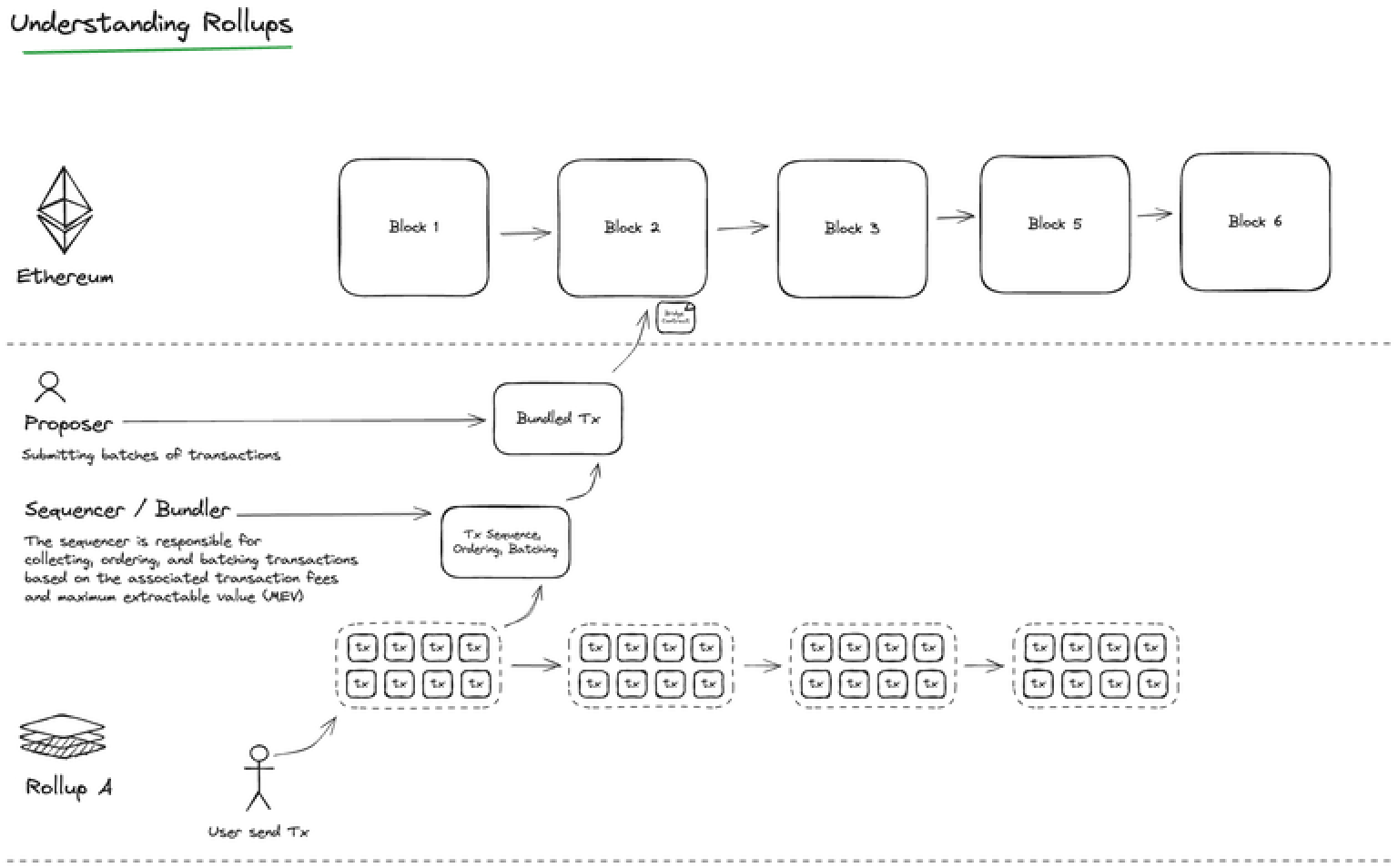Understanding the Rollups
Rollups work by "rolling up" or bundling hundreds or thousands of transactions into a single transaction. This method significantly reduces the amount of data that needs to be processed and stored on the main blockchain, leading to faster transaction times and lower fees.

Execution Flow:
-
Transaction Aggregation: Numerous individual transactions are compiled into a single package.
-
Data Posting: This bundled package is then posted to the main blockchain, significantly reducing the data storage and processing requirements.
-
Execution Verification: Through smart contract mechanisms, the validity of all aggregated transactions is verified, ensuring that each transaction complies with the blockchain's rules.
Types of Rollups
Optimistic Rollups
Optimistic Rollups assume transactions to be valid by default and only perform computation and state execution in case of a dispute. This optimistic approach allows for quicker transaction throughput but requires a challenge period during which transactions can be contested for their validity.
Zero-Knowledge Rollups (ZK-Rollups) or Validity Rollups
ZK Rollups utilize zero-knowledge proofs to validate all transactions within a rollup bundle without revealing any underlying data. This method ensures transaction validity upfront, eliminating the need for a dispute resolution mechanism.
Rollups, whether Optimistic or Zero-Knowledge, offer a compelling solution to the blockchain scalability challenge.

